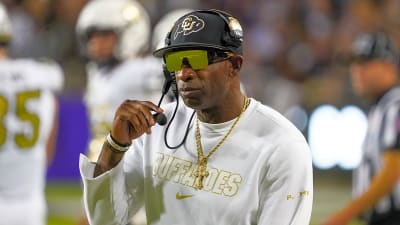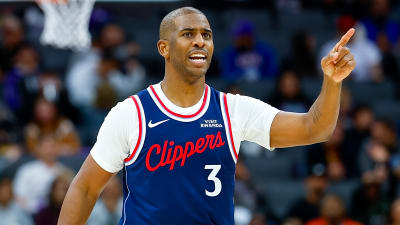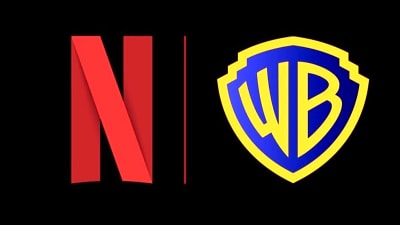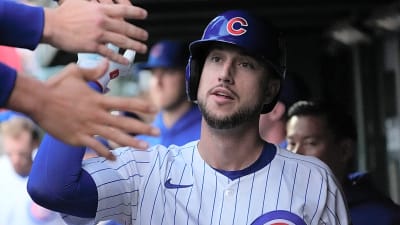- Home
- Quizzes
- My Quiz Activity
- Newsletters
- MY FAVORITES
- Add Sports/Teams
- SPORTS
-
NFL
- NFL Home
- Arizona Cardinals
- Atlanta Falcons
- Baltimore Ravens
- Buffalo Bills
- Carolina Panthers
- Chicago Bears
- Cincinnati Bengals
- Cleveland Browns
- Dallas Cowboys
- Denver Broncos
- Detroit Lions
- Green Bay Packers
- Houston Texans
- Indianapolis Colts
- Jacksonville Jaguars
- Kansas City Chiefs
- Las Vegas Raiders
- Los Angeles Chargers
- Los Angeles Rams
- Miami Dolphins
- Minnesota Vikings
- New England Patriots
- New Orleans Saints
- New York Jets
- New York Giants
- Philadelphia Eagles
- Pittsburgh Steelers
- San Francisco 49ers
- Seattle Seahawks
- Tampa Bay Buccaneers
- Tennessee Titans
- Washington Commanders
-
MLB
- MLB Home
- Athletics
- Arizona Diamondbacks
- Atlanta Braves
- Baltimore Orioles
- Boston Red Sox
- Chicago White Sox
- Chicago Cubs
- Cincinnati Reds
- Cleveland Guardians
- Colorado Rockies
- Detroit Tigers
- Houston Astros
- Kansas City Royals
- Los Angeles Angels
- Los Angeles Dodgers
- Miami Marlins
- Milwaukee Brewers
- Minnesota Twins
- New York Yankees
- New York Mets
- Philadelphia Phillies
- Pittsburgh Pirates
- San Diego Padres
- San Francisco Giants
- Seattle Mariners
- St. Louis Cardinals
- Tampa Bay Rays
- Texas Rangers
- Toronto Blue Jays
- Washington Nationals
-
NBA
- NBA Home
- Atlanta Hawks
- Boston Celtics
- Brooklyn Nets
- Charlotte Hornets
- Chicago Bulls
- Cleveland Cavaliers
- Dallas Mavericks
- Denver Nuggets
- Detroit Pistons
- Golden State Warriors
- Houston Rockets
- Indiana Pacers
- Los Angeles Clippers
- Los Angeles Lakers
- Memphis Grizzlies
- Miami Heat
- Milwaukee Bucks
- Minnesota Timberwolves
- New Orleans Pelicans
- New York Knicks
- Oklahoma City Thunder
- Orlando Magic
- Philadelphia 76ers
- Phoenix Suns
- Portland Trail Blazers
- Sacramento Kings
- San Antonio Spurs
- Toronto Raptors
- Utah Jazz
- Washington Wizards
-
NHL
- NHL Home
- Anaheim Ducks
- Boston Bruins
- Buffalo Sabres
- Calgary Flames
- Carolina Hurricanes
- Chicago Blackhawks
- Colorado Avalanche
- Columbus Blue Jackets
- Dallas Stars
- Detroit Red Wings
- Edmonton Oilers
- Florida Panthers
- Los Angeles Kings
- Minnesota Wild
- Montreal Canadiens
- Nashville Predators
- New Jersey Devils
- New York Islanders
- New York Rangers
- Ottawa Senators
- Philadelphia Flyers
- Pittsburgh Penguins
- San Jose Sharks
- Seattle Kraken
- St. Louis Blues
- Tampa Bay Lightning
- Toronto Maple Leafs
- Utah Mammoth
- Vancouver Canucks
- Vegas Golden Knights
- Washington Capitals
- Winnipeg Jets
- NCAAF
- NCAAM
- Olympics
- Boxing
- Entertainment
- Lifestyle
- Golf
- MMA
- Soccer
- Tennis
- Wrestling
- Sports Betting
- More Sports
- RESOURCES
- My Account
- YB on Facebook
- YB on Twitter
- YB on Flipboard
- Contact Us
- Privacy Policy
- Terms of Service
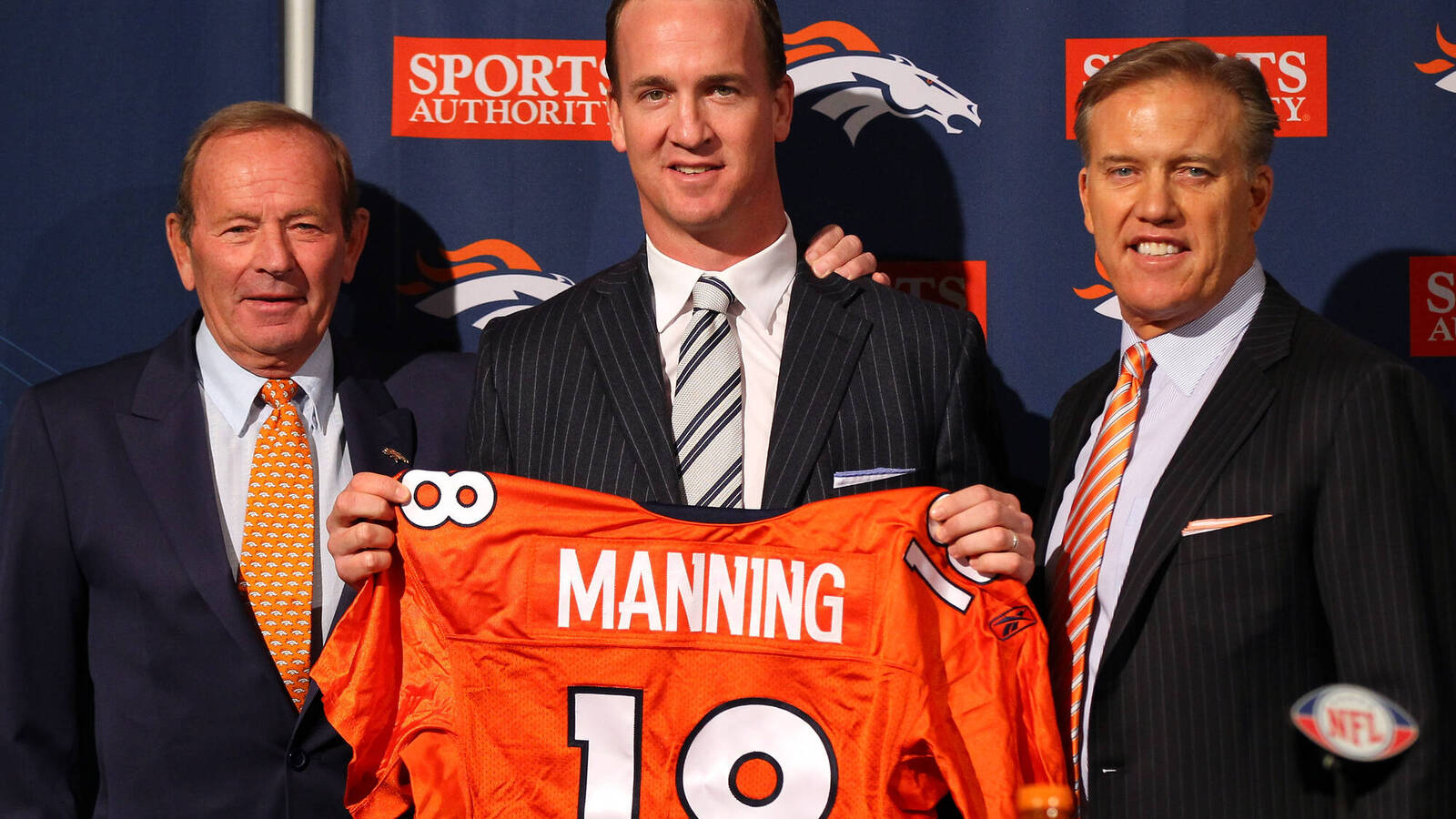
Which NFL teams had the best free agent classes of all-time?
Since full-fledged free agency began in 1993, it has become vital to NFL roster-building. Teams have used free-agency hauls to secure Super Bowl championships. Quarterbacks have moved the needle most, but well-rounded free-agency classes have ignited teams' prospects as well. Here are the best team performances on the market.
San Francisco 49ers, 1997
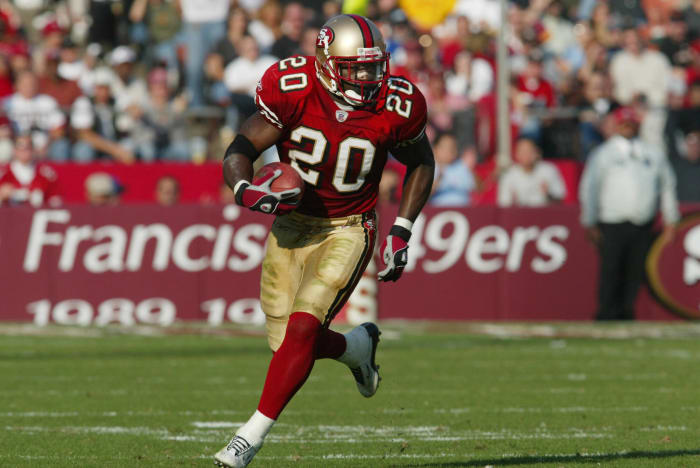
For star power, this one is tough to beat. The 49ers inked two Hall of Famers, signing Rod Woodson and Kevin Greene. The ex-Steelers helped the 49ers lead the NFL in total defense; Greene, whom the Panthers cut in August, notched 10.5 sacks. But the 49ers cut both in a 1998 salary purge, limiting their Bay Area impact. But this class also included Garrison Hearst, a former Cardinals top-five pick who spent 1996 in Cincinnati. Hearst signed a low-cost deal but was part of the final Steve Young-led playoff teams, and after a severe foot injury that cost him two years, he re-emerged as Comeback Player of the Year to aid a Jeff Garcia-aided resurgence. O-line addition Kevin Gogan also went 2-for-2 in Pro Bowls as a 49er.
Chicago Bears, 2004

The 2002 and '03 seasons revealed a 13-3 2001 campaign as fluky, but the Bears loaded up on offense to complement their Brian Urlacher-led defense. Chicago started this rearmament by giving Thomas Jones a four-year, $9.25 million deal; a bigger payday then went to tackle John Tait, whom the Chiefs transition-tagged. Part of an all-time great Kansas City O-line, Tait signed a six-year, $33.5M offer sheet the Chiefs did not match. Ex-Bills guard Ruben Brown joined the pair weeks later. Tait and Brown teamed up on the next four Bears squads. They and Jones, who held off top-five pick Cedric Benson during two 1,200-yard years, helped Chicago's QB-limited offense reach Super Bowl XLI in 2006.
Carolina Panthers, 2003

It is important to remember Jake Delhomme was a Saints backup for years before the Panthers gave him a two-year, $4 million deal. That flier produced some of the franchise's best work. Delhomme guided the Panthers to Super Bowl XXXVIII in his first Charlotte season, going toe-to-toe with Tom Brady. The Panthers ventured to the 2005 NFC championship game and earned a 2008 No. 2 seed during Delhomme's run. Regardless of his five-turnover meltdown in the '08 playoffs, quite the return on investment. This haul also included running back Stephen Davis and ageless wideout Ricky Proehl. Davis' 2003 Pro Bowl slate nearly pushed Carolina to a title, while Proehl managed a second Super Bowl game-tying catch against the Patriots.
Carolina Panthers, 1996

Taking over an expansion team, Hall of Fame GM Bill Polian began arming it in Year 1 by signing Hall of Famer Sam Mills, linebacker Lamar Lathon and kicker John Kasay. The Panthers built on that in 1996, signing Greene (who later came back after his 49ers one-and-done), along with cornerback Eric Davis, tight end Wesley Walls and Olympian-turned-returner Michael Bates. Also in this class: Steve Beuerlein, a Jaguars restricted free agent who backed up Kerry Collins before taking over following the starter's 1998 exit. This group combined longevity -- Bates, Davis and Walls were Panthers into the 2000s.-- with accolades (15 Pro Bowls), boosting Carolina to the NFC championship game in its second season.
Jacksonville Jaguars, 1996

After signing Jimmy Smith in 1995, the Jaguars added both Keenan McCardell and Andre Rison in '96. Rison bombed (though he helped the Packers win a title later that year), but McCardell and Smith became one of the era's defining wideout pairs. Given a three-year, $6 million deal, McCardell posted four 1,000-yard seasons as a Jaguar. The Jags also poached tackle Leon Searcy (five years, $17M) and linebacker Eddie Robinson from division rivals (Steelers, Oilers). Both started during the best stretch in team history. Veteran D-end Clyde Simmons also combined for 16 sacks from 1996-97. The Jags and Panthers used these loaded classes to go from '95 expansion teams to '96 conference championship qualifiers.
Kansas City Chiefs, 2001

Usurped by Jamal Lewis in Baltimore, Priest Holmes totaled four carries in Super Bowl XXXV. Holmes' relocation, on a five-year deal worth $8 million, led to one of the great three-year surges in running back history. A Chiefs team, amid an offensive retooling effort under new HC Dıck Vermeil, unleashed Holmes, who zoomed to All-Pro honors from 2001-03 and thrived behind one of the NFL's greatest O-lines. The Chiefs, who soon traded for Trent Green and Willie Roaf, bolstered their front by signing ex-Bears center Casey Wiegmann and blocking tight end Jason Dunn. They combined to play 16 Kansas City seasons. Eddie Kennison, who briefly retired from the Broncos, joined in November and grew into K.C.'s No. 1 receiver.
Los Angeles Rams, 2017

Sean McVay became by far the biggest fish the Rams added in 2017, but Andrew Whitworth helped, pardon the trope, ignite McVay's culture change by signing a three-year, $33.8 million deal. The left tackle lasted five years, joining fellow signee Robert Woods in becoming McVay-era mainstays. Woods transformed his career by leaving run-oriented Buffalo for L.A.; both he and Whitworth signed second Rams deals in 2020. L.A. also signed center John Sullivan and slot man Nickell Robey-Coleman. While Sullivan started in Super Bowl LIII, the Rams probably do not get there without Robey-Coleman's historic non-penalty. He also provided legal on-field help for the fast-rising team.
Denver Broncos, 1997

Five members of the Broncos' Super Bowl XXXII starting lineup came from this class. Hall of Famer Gary Zimmerman's 1998 retirement opened the door for six, as Harry Swayne entered the lineup, by Super Bowl XXXIII. Mike Shanahan splurged for fullback Howard Griffith and longtime John Elway menace Neil Smith, and the team brought back Keith Traylor -- an ex-Bronco linebacker who jumped a few weight classes to become a D-tackle during his time away. Swayne waited a year to start, but fellow signee Tony Jones started at both right and left tackle for the late-'90s Bronco Super Bowl teams. Cornerback/All-Pro punt returner Darrien Gordon rounded out one of the deepest classes in free agency annals.
Seattle Seahawks, 2013

Since the 2011 CBA turned the rookie-QB contract into a roster-building weapon, the Seahawks were the first team to load up around the low-cost deal. In Russell Wilson's second year, the Seahawks signed defensive ends Michael Bennett and Cliff Avril. Both edge-rushing stalwarts joined on manageable deals -- Bennett a one-year, $4.8 million pact, Avril for two years and $13M -- and enhanced Seattle's rising defense. Each played five Seahawks seasons, signing extensions, and were central in helping Bobby Wagner and the Legion of Boom form one of the modern era's great defensive nuclei. Back-to-back Super Bowl berths and four combined Pro Bowls ensued.
New England Patriots, 2003

The Patriots holding a Rodney Harrison free agency meeting at the Ground Round may have cost style points, but the Chargers cap casualty passed on joining the Raiders' veteran brigade soon after. Teaming with Ty Law in the secondary, Harrison helped the Patriots defense lead the NFL in 2003 and '04. Also contributing to the back-to-back champs' cause: linebacker Rosevelt Colvin, cornerback Tyrone Poole and enduring D-tackle Ted Washington. Colvin and Harrison became Patriot mainstays; each started six seasons for Bill Belichick's squad. Washington collected a ring as a 2003 one-and-done, while Poole -- a Denver backup in 2002 -- became a full-timer alongside Law.
Denver Broncos, 2014

Aging QBs and free agency mastery anchored both eras of Broncos championship teams. The Seahawks humbled Peyton Manning's record-setting offense in Super Bowl XLVIII; GM John Elway fixed key problems a month later. The signings of Aqib Talib, T.J. Ward and DeMarcus Ware helped turn the Broncos, as Manning's neck injury accelerated a decline, into a defensive power. After an acclimation year, the trio bolstered Denver's Von Miller-driven defense that became a Super Bowl-winning unit and one of the era's best. Manning received late-career help here, too, with Emmanuel Sanders reneging on a Chiefs agreement to replace Eric Decker. Sanders (three 1,000-yard seasons) peaked during his six-year Denver stay.
San Francisco 49ers, 1994

The 49ers adding Deion Sanders in September 1994 changed the NFC, boosting the team over the Cowboys. But San Francisco stocked its roster with vets to support Prime, signing linebackers Ken Norton Jr. and Gary Plummer. A starter on the 1992 and '93 Cowboys' Super Bowl teams, Norton lasted six years in San Francisco and made two Pro Bowls. Plummer, seen taking "the monkey" off Steve Young's back in Super Bowl XXIX, joined him as a three-year starter. Vets Rickey Jackson, Richard Dent, Charles Mann and Toi Cook hopped along as well, but Sanders drove this class. Given just $2 million on a one-year deal, Sanders earned Defensive Player of the Year honors. But this became a one-and-done partnership.
Baltimore Ravens, 2000

During the 2000 offseason, the Ravens both elevated their offensive capabilities and formed one of the most impenetrable D-tackle walls in NFL history. Shannon Sharpe signed after 10 Broncos seasons; the then-32-year-old tight end led Baltimore in receiving in 2000. Trent Dilfer signed for less (one year, $1 million) than Sharpe (four years, $13.8M) but moved the needle in Baltimore's most successful season. The Ravens, who also added Pro Bowl fullback Sam Gash and Pro Bowl D-tackle Sam Adams, benched second-year starter Tony Banks for Dilfer and went 11-1 with the ex-Bucs top-10 pick. Dilfer and Sharpe's 98-yard AFC championship connection cemented the Super Bowl trip. Only Gash remained by 2002, however.
Denver Broncos, 1995

Mike Shanahan's first Broncos free agency class did not hit en masse, but multiple cornerstones joined the new HC's roster. The Broncos signed Ed McCaffrey and guard Mark Schlereth, with each joining on mid-market deals; both became linchpins in Denver. The Broncos also reacquired Tyrone Braxton, who spent 1994 in Miami, and moved their former cornerback starter to safety. Braxton joined McCaffrey and Schlereth as a Pro Bowler and multi-Super Bowl starter. Fullback signing Aaron Craver also cleared paths for Terrell Davis during the Hall of Famer's first All-Pro slate, while Maa Tanuvasa became a four-year D-line starter. This class helped Shanahan construct a repeat champion.
Oakland Raiders, 1999

Falling well off the contender radar as the 1990s progressed, the Raiders quickly rebuilt their foundation. Gruden's second free agent class included Rich Gannon's four-year, $16 million deal. The Chiefs mistakenly prioritized Elvis Grbac over their backup, and Gannon galvanized the Raiders. The late-blooming QB went 4-for-4 in Pro Bowls as Oakland's starter and attracted several big-ticket free agents -- Jerry Rice, Rod Woodson, and Charlie Garner among them -- during an early-2000s Raiders rebirth. The team's '99 class also included running back Tyrone Wheatley and fullback Zack Crockett. The latter played eight years in Oakland, outlasting all the early-aughts vets.
Tampa Bay Buccaneers, 2001

Jon Gruden's Tampa Bay title largely came with Tony Dungy's roster, and the replaced coach's final offseason made the final preparations. The Bucs landed the top free agent and the top UFA quarterback available, signing Simeon Rice and Brad Johnson. The Ravens preferred Johnson over Elvis Grbac, but the ex-Minnesota and Washington starter chose Tampa's five-year, $28 million proposal. Leaving Arizona after being franchise-tagged in 2000, Rice provided a lethal inside-outside tandem with Warren Sapp. The elite edge rusher ripped off five straight double-digit sack seasons with the Bucs, adding four in the 2002 playoffs. Johnson and the Bucs' No. 1 defense mowed down their postseason foes in Gruden's debut.
Dallas Cowboys, 1995

Both of Deion Sanders' free agency derbies dragged into September. The two-sport athlete that helped the 49ers past the Cowboys, en route to a Super Bowl rout, switched sides in the NFC's 1990s arms race. Dallas gave the cornerback icon a five-year, $30 million deal, beating out offers from the 49ers and Broncos. (The NFL later forced the Cowboys to redo this contract due to its backloaded nature minimizing cap hits.) Deion did not debut for Dallas until late October. Delay aside, Sanders helped Jerry Jones' team win a Super Bowl post-Jimmy Johnson. The Cowboys, who rostered Sanders for five years, also signed center Ray Donaldson. The ex-Colt earned Pro Bowl acclaim, giving the Cowboys four Pro Bowl O-linemen during Emmitt Smith's record-setting season.
New York Giants, 2005

GM Ernie Accorsi's penultimate free agency crew did not come cheap, but the Giants' expenditures became pillars for their Super Bowl XLII-winning team and beyond. The Giants pried Plaxico Burress from Pittsburgh (six years, $25 million), Antonio Pierce from Washington (six years, $26M) and tackle Kareem McKenzie from the Jets (seven years, $37.8M). This monstrous haul supplemented Eli Manning and powered four straight playoff berths. This trio combined to start 16 Giants seasons. Burress and Pierce received more attention, and while the duo produced, McKenzie provided the most value. As part of a veteran O-line, the right tackle lasted through Super Bowl XLVI.
Green Bay Packers, 1993

Complete with a cross-country tour, Reggie White's free agency turned into a spectacle. Teams that qualified for the 1992 conference championship round could not pursue White, due to rules in place during free agency's debut, making the Packers' 1992 playoff absence fortunate. White ensured Green Bay did not miss another NFC bracket. Despite being 31 when he signed, the all-time great went 6-for-6 in Pro Bowls as a Packer and took over Super Bowl XXXI down the stretch. In addition to White's four-year, $17M deal, the Pack added three-year guard starter Harry Galbreath. But White proved worth the then-massive deal, eventually helping the Packers overtake the Cowboys and 49ers.
Tampa Bay Buccaneers, 2020

While many teams were connected to Tom Brady, only the Chargers and Bucs showed serious interest. Eyeing the 49ers and later showing dismay at the Raiders sticking with Derek Carr, the 40-something icon used Tampa as the location for his closing argument. Brady's two-year, $50 million deal preceded Leonard Fournette -- a summer Jaguars cut -- and, for better or worse, Antonio Brown signing up. The Bucs' pitch centered around a ready-and-waiting supporting cast, though Brady lured trade-get Rob Gronkowski out of the WWE. While a predictable AB combustion ensued -- after the mercurial star helped the Super Bowl LV cause -- Brady made the drama worthwhile by ending a 12-year playoff drought with a title.
New England Patriots, 2001

For depth, this class is nearly untouchable. The Patriots found seven starters during the 2001 offseason, with Mike Vrabel -- a four-year Steelers backup -- the centerpiece. The linebacker-turned-HC started for eight Pats teams. Ex-Ram Roman Phifer joined Vrabel and started through his age-35 season (2003). The Pats also picked up running back Antowain Smith and wideout David Patten, each a maiden-voyage Tom Brady skill cog, and added fullback Marc Edwards, longtime Lions blocker Mike Compton and ex-Bill Belichick Browns and Jets pupil Anthony Pleasant. Pro Bowl special-teamer Larry Izzo: also a 2001 buy-low. Belichick and Scott Pioli began the Pats' Brady-era foundation with this bargain-buy binge.
Philadelphia Eagles, 2024

A stretch-run implosion sank the 2023 Eagles; they battered the Chiefs in Super Bowl LIX a year later. Free agents drove the turnaround. GM Howie Roseman deviated from his running back model, giving Saquon Barkley a three-year, $37.75 million deal to set the pace in 2024. Barkley rewarded the Eagles with the NFL's ninth 2,000-yard rushing season, with Week 18 rest denying him a path to Eric Dickerson's record. Roseman also saw $3.5M linebacker Zack Baun morph from Saints backup to first-team All-Pro. Philly turned Mekhi Becton ($2.5M) from Jets tackle bust to guard starter and brought back trash-talking safety C.J. Gardner-Johnson. While the Eagles may have missed on their top signing (Bryce Huff), franchise-changing value came from this class.
Denver Broncos, 2012

Not as deep as previous Broncos entries, their victory in the Peyton Manning sweepstakes became a franchise-changing coup. Securing the first Manning meeting, second-year GM John Elway sold the Colts legend on following his late-30s path. Manning brought old friends Brandon Stokley and Jacob Tamme, and the Broncos also signed wideout Andre Caldwell and cornerback Tracy Porter. Manning joined a young Denver nucleus and led the then-middling team to four straight playoff byes and two Super Bowls, breaking records along the way. The five-time MVP's late-prime dominance slowed midway through this five-year, $96 million contract, but the Broncos have not recovered from his exit.
St. Louis Rams, 1997

Kurt Warner was a Missourian for nearly two years before Trent Green's injury created his historic opportunity. The Rams added the ex-Packers UDFA off the scrap heap in December 1997; Warner spent 1998 backing up Tony Banks. The Arena mainstay, later blessed with Marshall Faulk and Torry Holt, spent six full seasons in St. Louis, guided the Rams to their modern-era zenith. Another 1997 signee was involved, too. The Rams signed future Super Bowl hero Mike Jones from the Raiders; most famous for his goal-line tackle, Jones started four seasons in St. Louis. Dıck Vermeil's first Missouri offseason also included the signing of Super Bowl D-line starter Jeff Zgonina.
New York Jets, 1998

The Bill Parcells-Bill Belichick duo assembled a team that advanced to the AFC title game. Eight starters in the Jets lineup that day came from this class. The Jets signed two future Hall of Famers, inking Kevin Mawae to a then-center-record deal (five years, $17M) and adding restricted free agent Curtis Martin (six years, $36M) from the Patriots. Parcells paid first- and third-round picks to reunite with the ex-Patriots running back. Mawae and Martin combined for nine Pro Bowls as Jets, each staying into the mid-2000s. The Ravens cutting Vinny Testaverde added to this haul; the ex-Belichick Browns QB signed in June. Pleasant, Cox and cornerback Otis Smith also reunited with "the Bills." Testaverde's September 1999 ACL tear affected this plan, but the '98 haul paid dividends into the Chad Pennington era.
New Orleans Saints, 2006

John Lynch's Week 17 sack-strip of Drew Brees changed the course of multiple franchises' outlooks. Brees' torn shoulder labrum led the Chargers, who franchise-tagged the then-inconsistent QB in 2005, to roll with their Philip Rivers plan. The Dolphins' medical staff also did not sign off on Brees, opening the door for a Saints renaissance. The Saints began the Sean Payton era by making the greatest free agent signing in modern NFL history, adding Brees for six years and $60 million. Linebacker Scott Fujita, a four-year starter, joined Brees in helping the Saints win Super Bowl XLIV. The Saints' signing checked off their QB box for 15 years, separating this signing from the Manning, Brady and Warner deals.
Sam Robinson is a sportswriter from Kansas City, Missouri. He primarily covers the NFL for Yardbarker. Moving from wildly injury-prone sprinter in the aughts to reporter in the 2010s, Sam set up camp in three time zones covering everything from high school water polo to Division II national championship games
More must-reads:
- Lions receive devastating news on safety Brian Branch
- Ranking the three teams atop the NFC North
- The 'Receiving leaders by NFL team' quiz
Breaking News
Trending News
Customize Your Newsletter
 +
+
Get the latest news and rumors, customized to your favorite sports and teams. Emailed daily. Always free!
PRIVACY POLICY EDITORIAL POLICY CONTACT US
ABOUT YARDBARKER TERMS OF SERVICE
Use of this website (including any and all parts and
components) constitutes your acceptance of these
Terms of Service and Privacy Policy.
This site is for entertainment purposes only.
There is no gambling offered on this site.
Gambling Problem? Call 1-800-Gambler.

